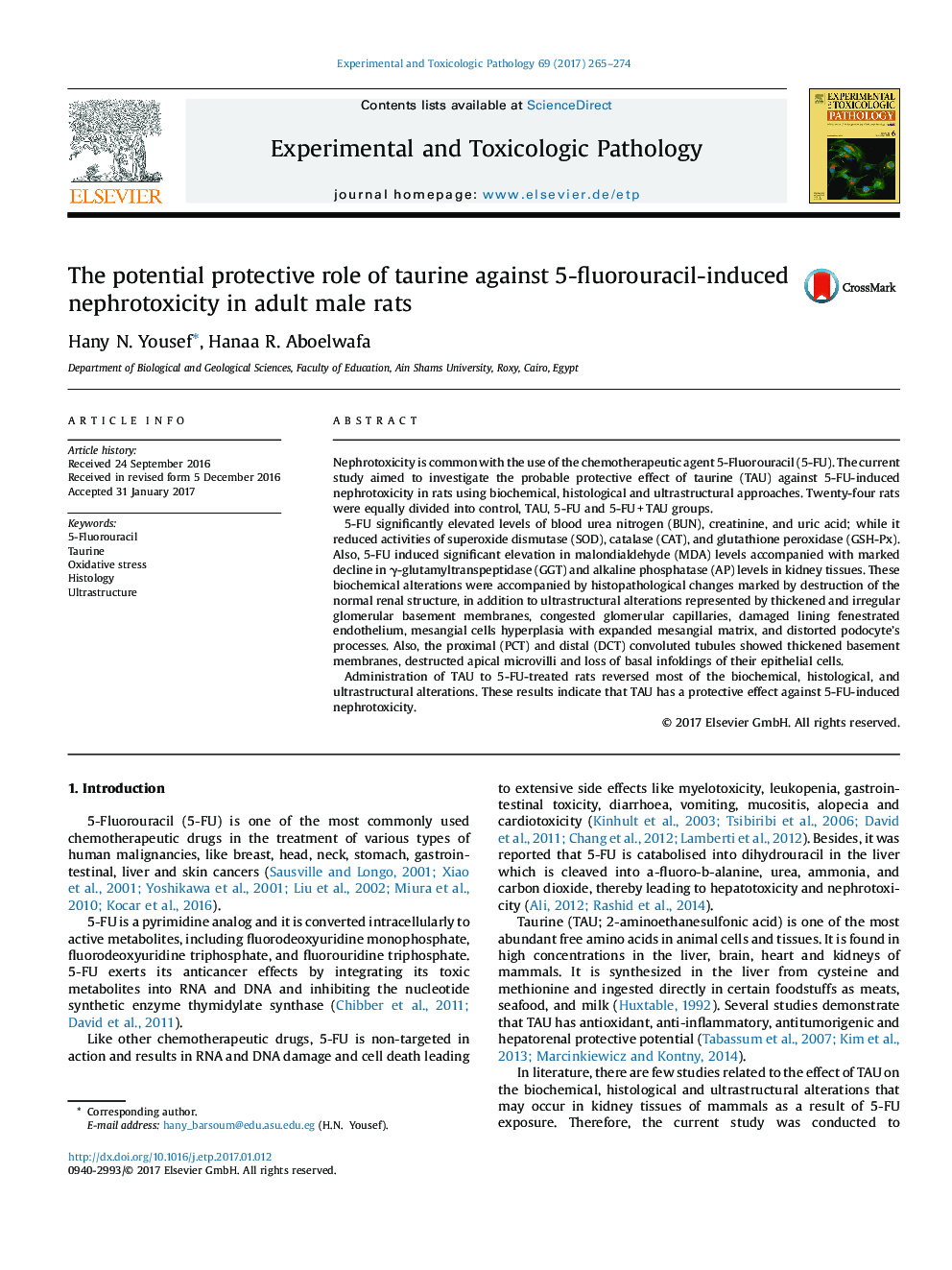| Article ID | Journal | Published Year | Pages | File Type |
|---|---|---|---|---|
| 5549752 | Experimental and Toxicologic Pathology | 2017 | 10 Pages |
Nephrotoxicity is common with the use of the chemotherapeutic agent 5-Fluorouracil (5-FU). The current study aimed to investigate the probable protective effect of taurine (TAU) against 5-FU-induced nephrotoxicity in rats using biochemical, histological and ultrastructural approaches. Twenty-four rats were equally divided into control, TAU, 5-FU and 5-FU + TAU groups.5-FU significantly elevated levels of blood urea nitrogen (BUN), creatinine, and uric acid; while it reduced activities of superoxide dismutase (SOD), catalase (CAT), and glutathione peroxidase (GSH-Px). Also, 5-FU induced significant elevation in malondialdehyde (MDA) levels accompanied with marked decline in γ-glutamyltranspeptidase (GGT) and alkaline phosphatase (AP) levels in kidney tissues. These biochemical alterations were accompanied by histopathological changes marked by destruction of the normal renal structure, in addition to ultrastructural alterations represented by thickened and irregular glomerular basement membranes, congested glomerular capillaries, damaged lining fenestrated endothelium, mesangial cells hyperplasia with expanded mesangial matrix, and distorted podocyte's processes. Also, the proximal (PCT) and distal (DCT) convoluted tubules showed thickened basement membranes, destructed apical microvilli and loss of basal infoldings of their epithelial cells.Administration of TAU to 5-FU-treated rats reversed most of the biochemical, histological, and ultrastructural alterations. These results indicate that TAU has a protective effect against 5-FU-induced nephrotoxicity.
